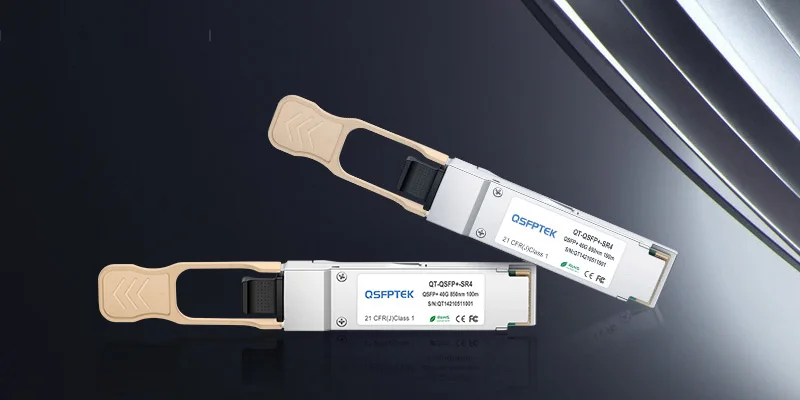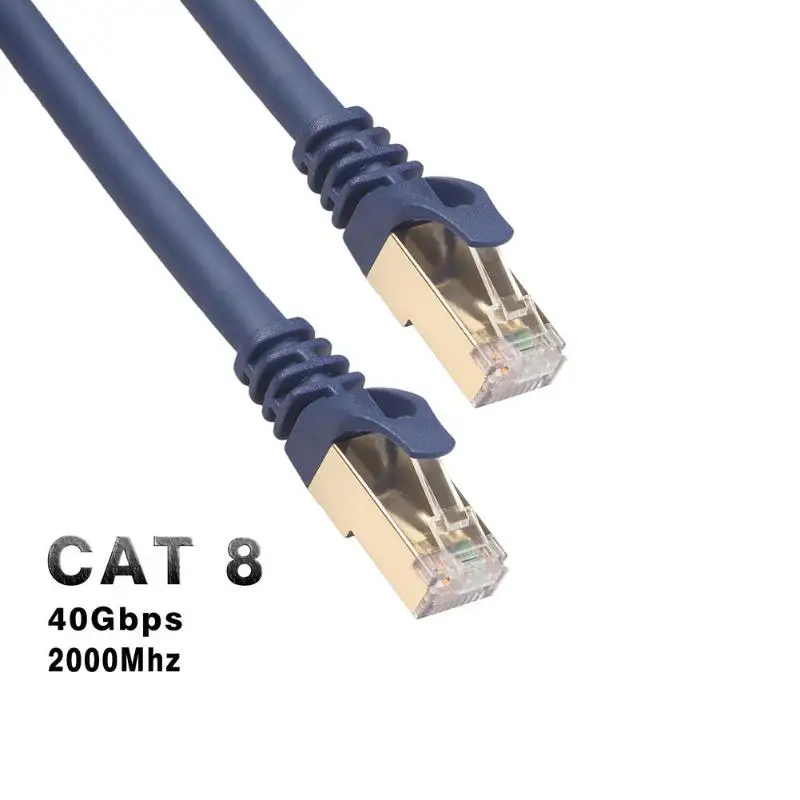To cope with the ever-increasing bandwidth and changes in network performance demands, many data centers are looking for higher-speed transmission methods. 10 Gigabit Ethernet occupies most of the de-facto standard data transmission in current data centers, while 40G Ethernet sees increasing adoption. Choosing the right cabling system has become more important to the data center. Currently, Cat8 cables are generally chosen for 25GBASE-T and 40GBASE-T networks. So do you know why you chose Cat8 cables? This article will explain what 25/40GBASE-T is and why choose Category 8 cables.
40G Ethernet Physical Layer Alternatives
The currently widely used 40G Ethernet standard generally uses single-mode optical fiber and MPO-based multi-mode optical fiber cables. The IEEE organization is developing a 40GBASE-T copper module based on a copper twisted pair system to adapt to 40G Ethernet. Regarding the construction of 40G Ethernet, high network rates also have higher and more stringent performance requirements for cable components and cable systems. The current mainstream 40G cable systems include the following:
Singlemode Fiber
With its excellent long-distance transmission performance, single-mode fiber can reach a maximum transmission distance of 40km at a rate of 40Gbps (40GBASE-ER4). The electronic devices and optical devices on the physical layer are generally transmitted in four channels, and the transmission rate of each channel is 10Gbps, which is aggregated into a 40G rate. Single-mode fiber is generally preferred when budgets are not constrained or when long-distance optical transmission needs to be established.
Multimode Fiber
MPO interface multimode fiber with parallel optics is the most popular 40G Ethernet medium (40GBASE-SR4) today. The advantage of multimode fiber is its lower cost. It is mainly used for short-distance transmission but is sufficient to support all typical link lengths in data center networks (up to 100 meters on OM3 cables and 125 meters on OM4)

Copper Twinax
For the transmission distance not more than 7m in length, in the 40GBASE-CR4 standard, it is mentioned that Twinax copper cable assemblies should be used. It is generally used to link two adjacent network devices in the physical layer.
Copper Twisted Pair
Based on current development trends, copper structured cabling systems will remain in widespread use in data centers in the future and will be a long-term replacement for 40G Ethernet fiber optic links. The cost of twisted-pair copper cabling will be lower than fiber optic systems for at least the next few years. The advantage of copper cabling is that they are easy to install and maintain. Also, the BASE-T network standard for twisted pair cable is automatically backward compatible. All of these advantages will allow enterprises to gradually upgrade to higher operating rates and thus better control their operating costs of enterprises.
In 2012, the IEEE initiated the definition of the 40GBASE-T standard using twisted pairs cabling. The cabling standardization bodies are also conducting related research. TIA is working on a specification for a "Category 8" cabling system to support 40GBASE-T. ISO/IEC is also working on two variants to support 40GBASE-T cabling systems. These new cabling systems are classified into Class 1 and Class 2. The former uses CAT6A-like components and the latter uses existing CAT7A-like components. Both of them have a larger capacity. In addition, ISO/IEC is in the process of defining recommendations for the use of existing cabling systems, such as Class FA for 40GBASE-T applications.
What are Cat 8 Cables?
Category (Cat8) is the next generation twisted-pair copper cable standard designed by ANSI/TIA-568-C.2-1 in 2016. The operating frequency of Category is 2 GHz (2000MHz). Compared with the previous generation, the Cat8 cable has higher bandwidth and requires shielding. Cat 8 cable can transmit up to 30m in a dual connector configuration. Its connectors can be either Class I (RJ45) or Class II (non-RJ45). Cat 8 cable supports backward compatibility with all RJ45 cabling and devices, and it is designed to support 25GBASE-T and 40GBASE-T applications. Typically used in small and medium-sized enterprise LANs, it is more common for interconnections between switches and servers in the data center.

What is 25/40GBASE-T?
The 25GBASE-T standard was formulated by IEEE 802.3 Task Force 802.3bq, which is part of the IEEE standardized BASE-T technologies. 25GBASE-T uses twisted pair cables to provide a maximum transmission rate of up to 25Gbps. It supports backward compatibility with the current 10GBASE-T cabling system, and also forward compatibility with 40GBASE-T, BASE-T devices have an auto-negotiation function to identify the capabilities supported at the other side of the link.
40GBASE-T technology was also developed by the IEEE 802.3bq task force group. This network standard supports a maximum rate of 40Gbit/s operating on 4-twisted pairs of cable. In fact, the 40GBASE-T standard was ratified earlier than the 25GBASE-T standard, which was incorporated into the IEEE 802.3bq (40GBASE-T) task group in order to meet various bandwidth requirements. Thus the standard covers both 25/40GBASE-T specifications
Why Do We Choose Cat8 Cable for 25G/40GBASE-T Network?
25/40G Ethernet still has broad development prospects in the current data center, and they are generally used for server interconnection. In 25 or 40G network deployment, the more common wiring systems include DAC components, OM3, OM4, and other optical cables. But these devices all have certain defects, such as the Twinax DAC assembly can only link the distance between devices less than 5m. Optical cables need to be used together with other equipment, such as optical transceivers. When the optical fiber link is less than 30m, the use of optical cables will increase the cost of the wiring system. The following section will describe the advantages of using Cat8 cable for 25G/40GBASE-T networks.
Easy Migrations to Higher Bandwidth
As we mentioned earlier, the patch cords can use the same RJ45 interface between them, so network upgrades can be implemented one end at a time. As a result, Using Cat8 patch cords allows data centers to quickly and smoothly migrate networks from 1G to 10G, 25G, and 40G incrementally.
Simple Deployment
Cat8 cable is plug-and-play and part of the BASE-T system, it is also very easy to terminate in the field, which saves engineers a lot of effort and time costs.
Cost Saving
The most outstanding advantage of copper transmission is that it can save a lot of money, and the twisted pair copper cable system has always been the most cost-effective solution in Ethernet networks. When you need to deploy a 25/40GBASE-T network, and the transmission distance is less than 30m, you can choose the fiber optic cable system and the Cat 8 cable system, and the Cat 8 cable has a lower cost. When the transmission distance is less than 5m, using the Cat 8 cables costs less than twisted pair DACs. Similarly, 25/40GBASE-T using a fiber optic system requires additional optical module hardware, which brings more deployment costs. The maximum transmission distance of Category 8 cable is 30 meters. In practical applications, less power is required. What's more? 25/40GBASE-T network using Cat 8 cable has lower thermal power, and the enterprise management network has less cooling pressure to further help enterprises reduce costs.
Conclusion
Data centers have been seeking higher bandwidth and components that can carry higher network speeds to cope with increasing network demands. Cat8 cables are gaining more and more attention in 25/40GBASE-T networks, and they can help data centers upgrade to 25G/40GBASE-T networks with less cost. If you need Cat8 patch cables or get more information about Cat8 patch cables, please contact QSFPTEK via sales@qsfptek.com.









